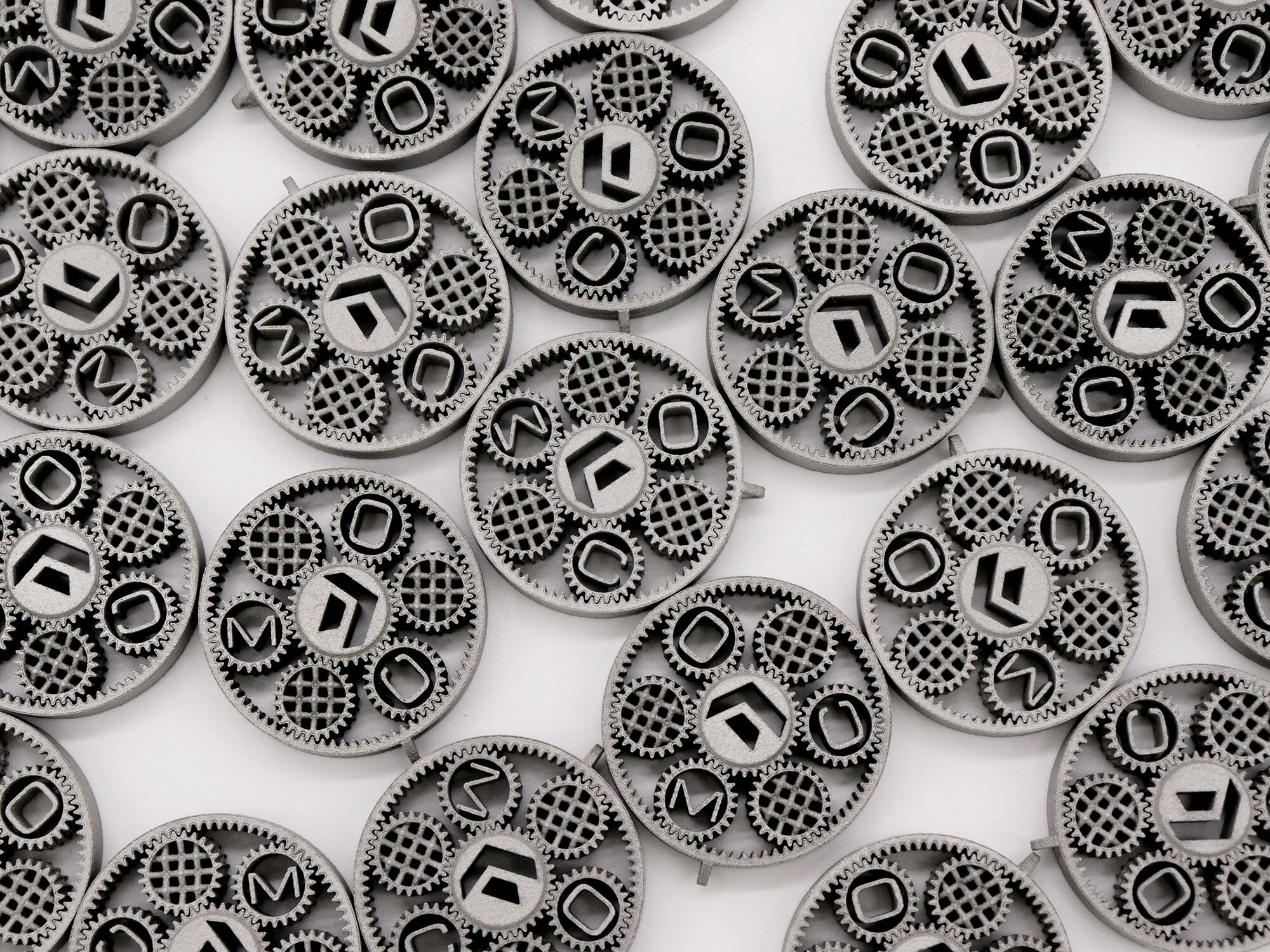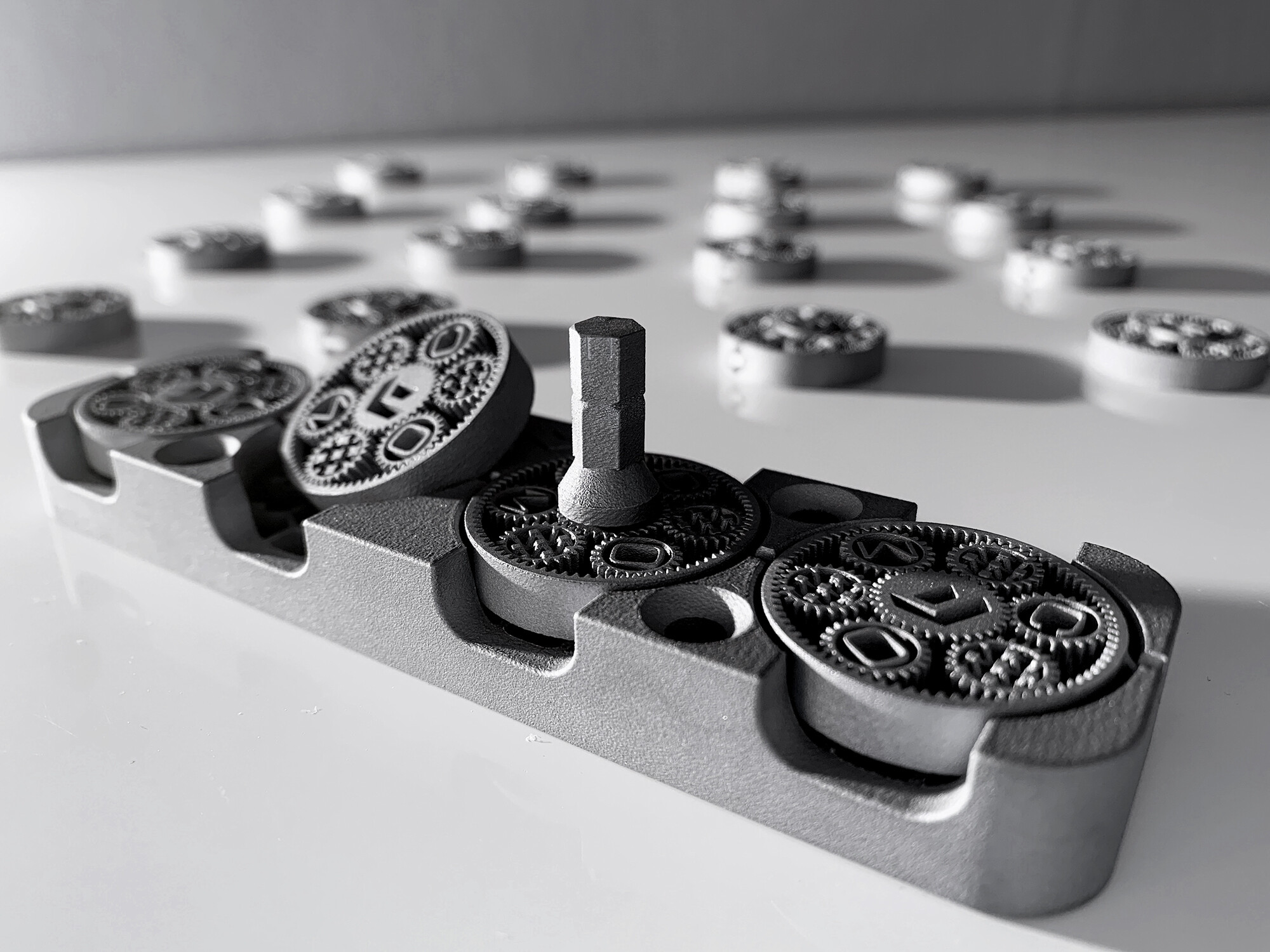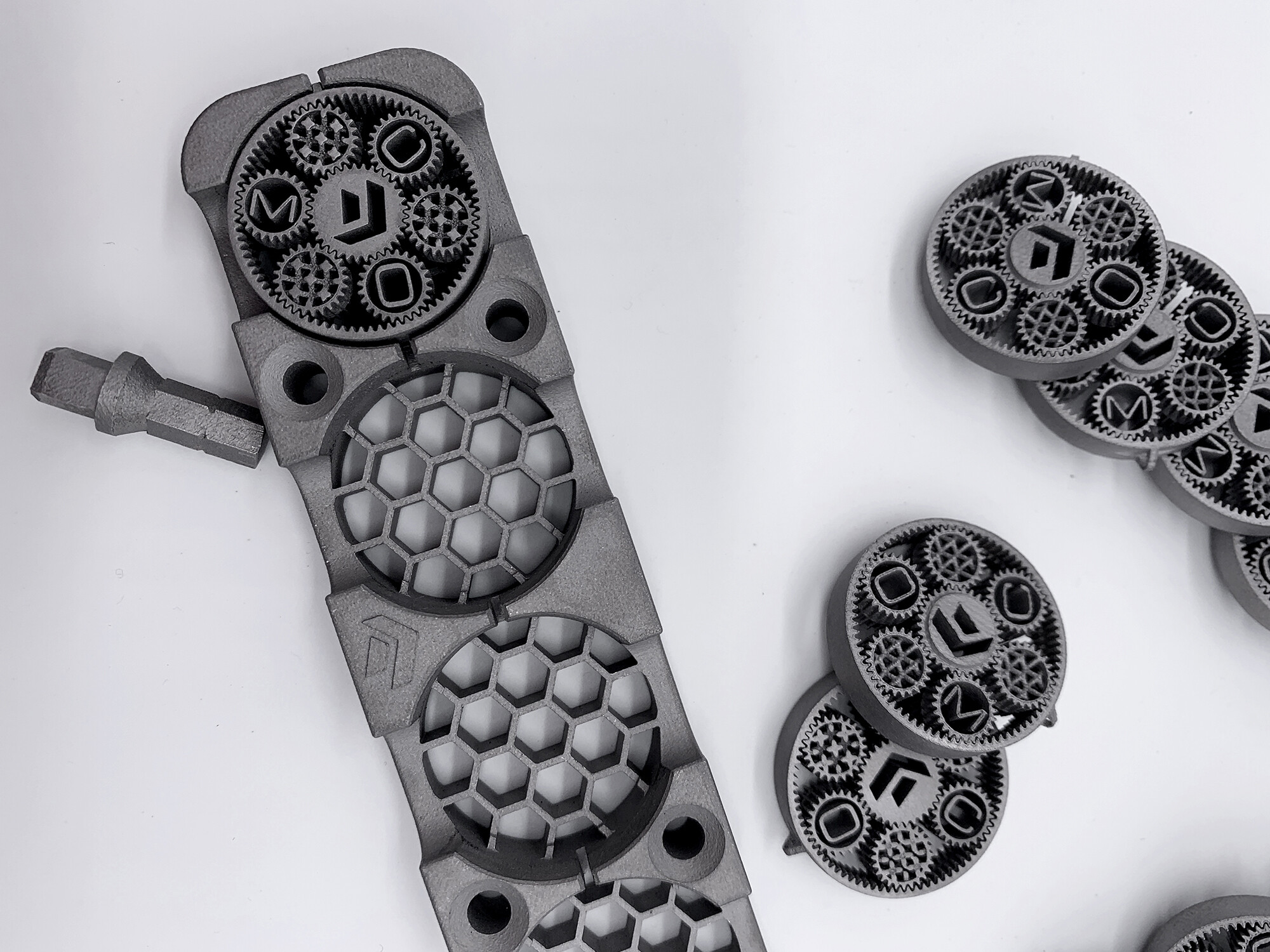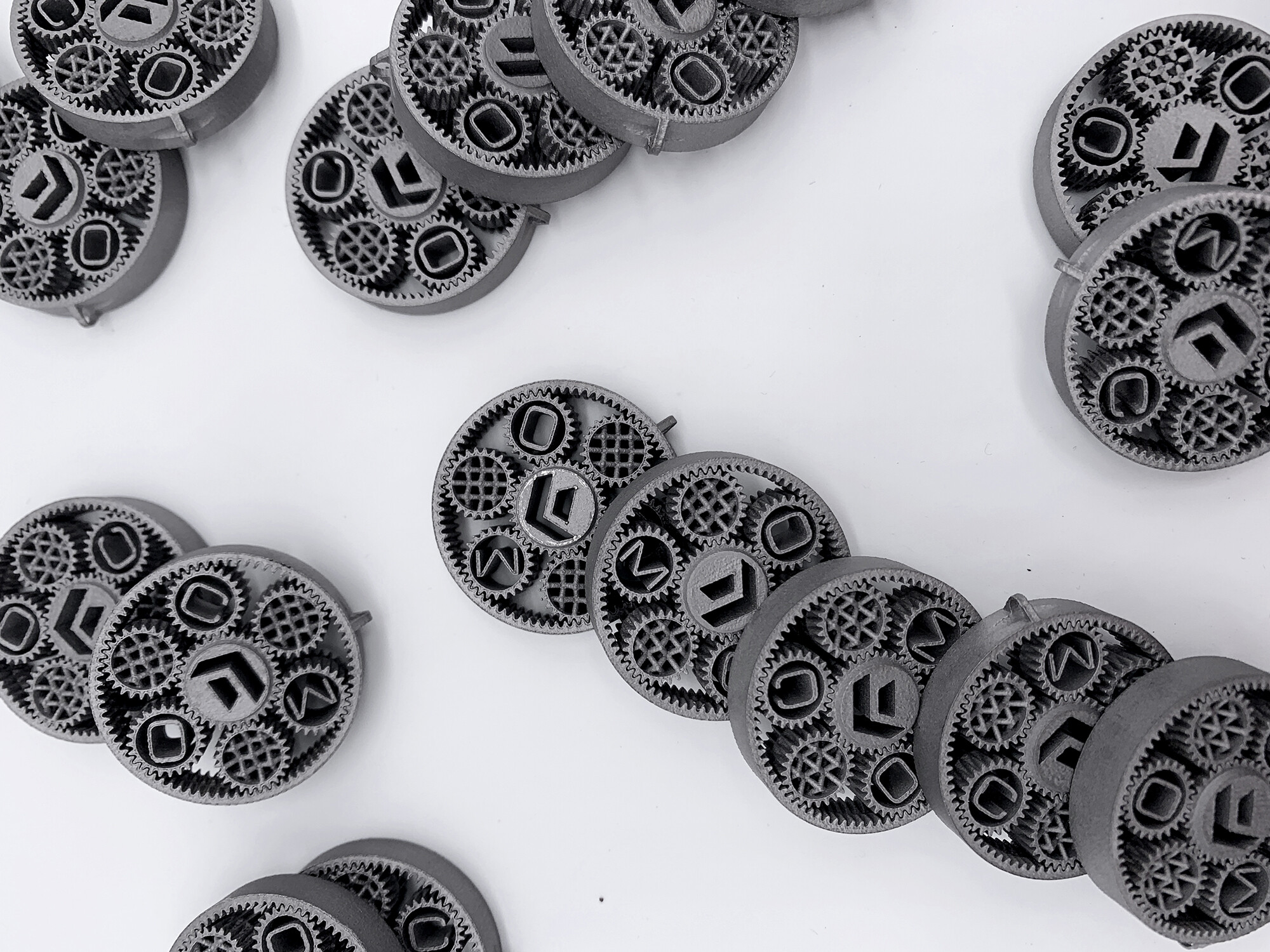Application: miniseries production
With the BOLDSERIES you can also produce small batches – we show you how in just six steps.
Miniseries production in less than 24 hours
To produce our miniseries, we use a gear component. It fits 22 times on the substrate plate at maximum plate capacity. This means that one printing process results in 22 gear components in less than 24 hours.
Here is the technical information about our miniseries:
Maximum load build plate:
23 parts
Printing time/part
0,9h
Costs/part:
19 Euro
Material consumption/part:
0,02kg
Material:
Stainless steel 316 L
Component density:
>99,5%
Surface:
Ra<11µm
Layer thickness
20µm
Number of layers:
435
1. Printing and data preparation
CAD model, parameters, support selection, component alignment, preparation MPRINT
The data preparation software MPREP prepares the components for printing. Parameter presets as well as automatic support structures are used to optimally align the components on the build plate. Due to the design and alignment, no supports are required for these 22 gearing components.
The print preparation of the MPRINT is simple and uncomplicated thanks to the intuitive HMI, which guides the user step by step through the individual phases of preparation. In this way, nothing is left out and expensive mistakes are thus avoided.
Time lapse from printing process
2. Printing process
Printing process with 200W fiber laser
With a focus diameter of 45µm and galvo scanner, the MPRINT prints fine geometries and lattice structures. The printing process for the 22 components takes about 21 hours. This means that the build time per component is less than one hour, which is among other things also thanks to the scanning speed of up to 3000mm/s. Despite the relatively short time, the MPRINT prints reliably and precisely and allows the user a wide range of applications.
The cartridge system ensures simple and clean powder management during print preparation and during the printing and unpacking process, as the user has minimal direct powder contact through the cartridges.
3. Unpacking process
Powder removal with minimal direct powder contact
In the MPUREpro, excess powder is removed from the components. The closed unpacking chamber enables unpacking with minimal direct powder contact.
Excess powder is collected in an empty cartridge and separated into reusable powder and powder for disposal in the MPUREpro’s integrated sieving unit. The recycled powder can then be reused for the next build job.
The powder cycle is designed to be as economical and sustainable as possible, as most of the powder can be used several times in most cases.
4. Removing from build plate & post processing
Sawing, sanding, polishing
The components are removed from the build plate with a band saw. The plate can be used again after a few processing steps.
If there are supports, they are removed with tongs.
The components are sanded and smoothed by sandblasting. This makes the surface structure finer.
5. Additional tool
Fast design and cost-effective production
To enable the six small gears to move smoothly and without jamming around the central gear, additional tools are designed and manufactured quickly and cheaply. With the holding device as well as the screw bit for a conventional cordless screwdriver, the gear wheels can be easily loosened from each other to allow the gear to rotate freely.
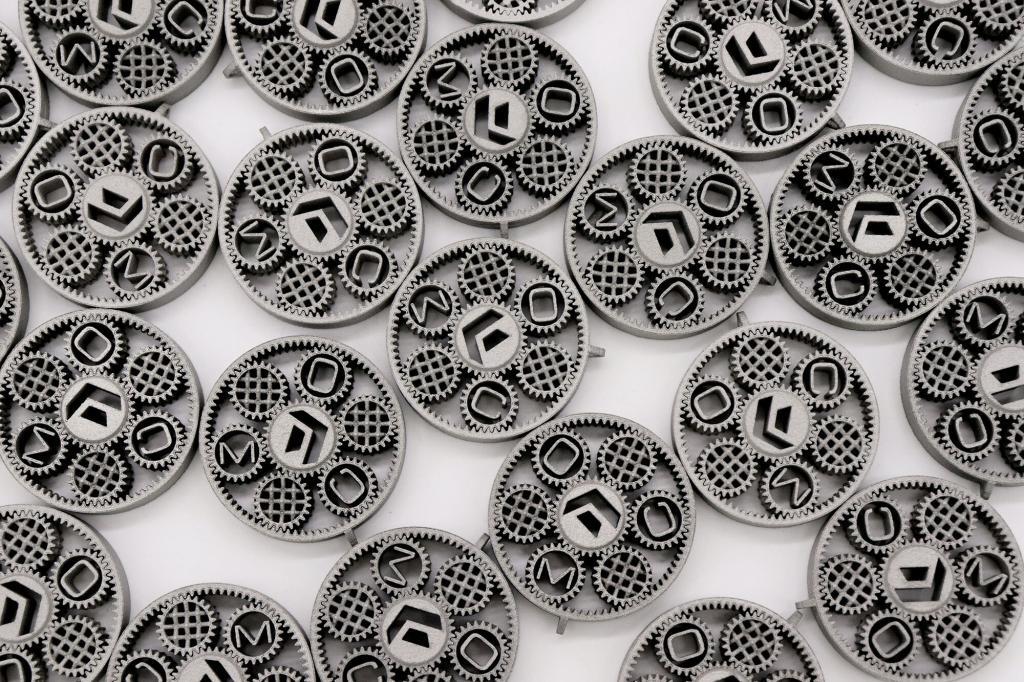
6. Finished part series
Miniseries in less than 24 hours
The components with optimum functional integration are now ready and are representative of the possibilities of the metal 3D printer MPRINT. Whether prototyping or small series production, the BOLDSERIES can be used in a variety of flexible ways.
